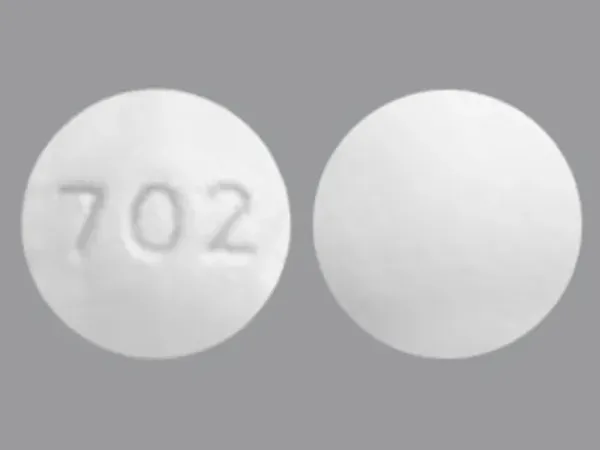Perphenazine Side Effects
Medically reviewed by Drugs.com. Last updated on Nov 5, 2024.
Applies to perphenazine: oral fixed-combination tablets, oral tablets.
Important warnings
This medicine can cause some serious health issues
-
Increased Mortality in Geriatric Patients with Dementia-related Psychosis
- Geriatric patients with dementia-related psychosis treated with antipsychotic agents are at an increased risk of death.100 101 102 103 104 o p
- Analyses of 17 placebo-controlled trials in geriatric patients mainly receiving atypical antipsychotic agents revealed an approximate 1.6- to 1.7-fold increase in mortality compared with that in patients receiving placebo.100 101 p
- Most fatalities appeared to result from cardiovascular-related events (e.g., heart failure, sudden death) or infections (mostly pneumonia).100 101 p
- Observational studies suggest that conventional or first-generation antipsychotic agents also may increase mortality in such patients.100 101 103 104
- Antipsychotic agents, including perphenazine, are not approved for the treatment of dementia-related psychosis.100 101 p
Side effects include:
Extrapyramidal reactions (e.g., Parkinson-like symptoms, dystonia, akathisia, tardive dyskinesia), drowsiness, muscular weakness, dry mouth, blurred vision, weight gain, skin reactions, amenorrhea, galactorrhea.
See also:
For healthcare professionals
Applies to perphenazine: compounding powder, injectable solution, oral concentrate, oral tablet.
Nervous system adverse events
- Frequency not reported: Extrapyramidal symptoms, opisthotonos, motor restlessness, hyperreflexia, dystonia, slurred speech, akathisia, dyskinesia, parkinsonism, ataxia, drowsiness, sedation, hypnosis, lethargy, cerebral edema, convulsive seizures, hyperactivity
- Postmarketing reports: Headaches, choreiform movements of the extremities, orofacial dyskinesia, tardive dyskinesia, disturbances in consciousness, somnolence, stupor, dizziness, tremor, epileptic fits, neuroleptic malignant syndrome (NMS), severe extrapyramidal dysfunction, coma, autonomic disturbances, cerebrospinal fluid protein abnormalities[Ref]
Convulsive seizures occurred most frequently in patients with EEG abnormalities and/or patients with a history of convulsive seizures.
Drowsiness usually occurred within the first 1 to 2 weeks, with gradual disappearance thereafter.
NMS occurred in patients who took neuroleptic drugs, and was fatal in some cases. NMS was characterized by severe extrapyramidal dysfunction, rigidity, stupor, coma, hyperthermia, and/or autonomic disturbances.
Significant autonomic effects were infrequently reported in patients who received less than 24 mg/day.[Ref]
Cardiovascular
- Frequency not reported: Pallor, hypertension, change in pulse rate, circulatory collapse, postural hypotension, bradycardia, peripheral edema, shock-like condition (hypotensive effect), reversible and nonspecific ECG changes
- Postmarketing reports: Tachycardia, QT prolongation, ventricular arrhythmias, ventricular tachycardia/fibrillation, edema, cardiovascular effects (related to neuroleptic malignant syndrome), hypotension, venous thromboembolism, deep vein thrombosis, cardiac arrest and Torsades de pointes[Ref]
Tachycardia occurred more commonly with sudden, marked increases in dose.[Ref]
Dermatologic
- Frequency not reported: Perspiration, urticaria, erythema, eczema, exfoliative dermatitis, photosensitivity, angioneurotic edema, contact dermatitis, skin pigmentation (in exposed areas)
- Postmarketing reports: Photosensitivity, rashes/pruritus, hyperhidrosis[Ref]
Contact dermatitis occurred in nursing personnel who handled the drug.[Ref]
Gastrointestinal
- Frequency not reported: Nausea, dysphagia, vomiting, diarrhea, obstipation, fecal impaction, parotid swelling, protrusion/discoloration/aching and rounding of tongue,
- Postmarketing reports: Oral dryness and altered saliva, adynamic ileus, constipation, other gastrointestinal atonic and hypomotility disorders[Ref]
Musculoskeletal
- Frequency not reported: Trismus, torticollis, retrocollis, aching and numbness of limbs, tonic spasm of masticatory muscles, muscle weakness, prolonged abnormal contractions of muscle groups
- Postmarketing reports: Systemic lupus erythematosus (SLE)/SLE-like syndrome, rigidity[Ref]
Ocular
- Frequency not reported: Oculogyric crisis, myosis, mydriasis, glaucoma, photophobia, epithelial keratopathies
- Postmarketing reports: Visual disorders, blurred vision, pigmented/pigmentary retinopathy, star-shaped lenticular opacities, fine particulate matter deposits in the cornea and lens[Ref]
Psychiatric
- Frequency not reported: Exacerbation of psychotic symptoms, catatonia/catatonic-like states, paranoid reactions, nocturnal confusion, bizarre dreams, libido changes,
- Postmarketing reports: Confusion, agitation, excitement, insomnia[Ref]
Hematologic
- Frequency not reported: Blood dyscrasias, eosinophilia, leukopenia, hemolytic anemia, thrombocytopenic purpura, pancytopenia
- Postmarketing reports: Agranulocytosis, transient leukopenia[Ref]
Metabolic
- Frequency not reported: Anorexia, hypoglycemia, polyphagia, increased appetite
- Postmarketing reports: Weight gain, hyperglycemia, increased serum cholesterol[Ref]
Respiratory
- Frequency not reported: Throat tightness, asthma, laryngeal edema
- Postmarketing reports: Nasal stuffiness, pulmonary embolism[Ref]
Other
- Frequency not reported: Fever/hyperpyrexia, reversed epinephrine effect
- Postmarketing reports: Fatigue, body temperature dysregulation, hyperthermia, sudden unexplained death, neonatal drug withdrawal syndrome[Ref]
Endocrine
- Frequency not reported: Syndrome of inappropriate antidiuretic hormone (ADH) secretion, protein bound iodine (PBI) increase not attributable to an increase in thyroxine
- Postmarketing reports: Hyperprolactinemia, gynecomastia (males), false positive pregnancy tests[Ref]
Hepatic
- Frequency not reported: Liver damage/biliary stasis, infectious hepatitis
- Postmarketing reports: Obstructive jaundice, cholestasis and chronic jaundice[Ref]
Hypersensitivity
- Frequency not reported: Anaphylactoid reactions[Ref]
Renal
- Frequency not reported: Glycosuria[Ref]
Genitourinary
- Postmarketing reports: Urinary hesitancy/retention/incontinence, amenorrhea, erectile dysfunction, impaired ejaculation, lactation, galactorrhea, moderate breast enlargement (females), bladder paralysis, polyuria, menstruation with decreased bleeding or disturbances in the menstrual cycle[Ref]
Immunologic
- Postmarketing reports: Antinuclear antibodies[Ref]
References
1. (2001) "Product Information. Trilafon (perphenazine)." Schering Corporation
2. Cerner Multum, Inc. "UK Summary of Product Characteristics."
Frequently asked questions
More about perphenazine
- Check interactions
- Compare alternatives
- Pricing & coupons
- Reviews (36)
- Drug images
- Dosage information
- During pregnancy
- Drug class: phenothiazine antiemetics
- Breastfeeding
- En español
Patient resources
Other brands
Professional resources
Related treatment guides
Further information
Perphenazine side effects can vary depending on the individual. Always consult your healthcare provider to ensure the information displayed on this page applies to your personal circumstances.
Note: Medication side effects may be underreported. If you are experiencing side effects that are not listed, submit a report to the FDA by following this guide.

